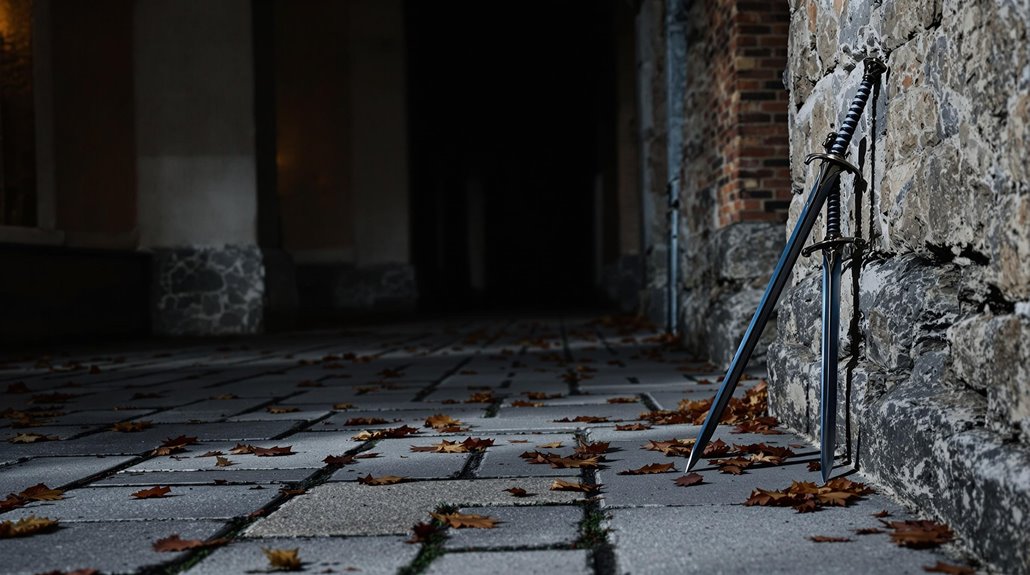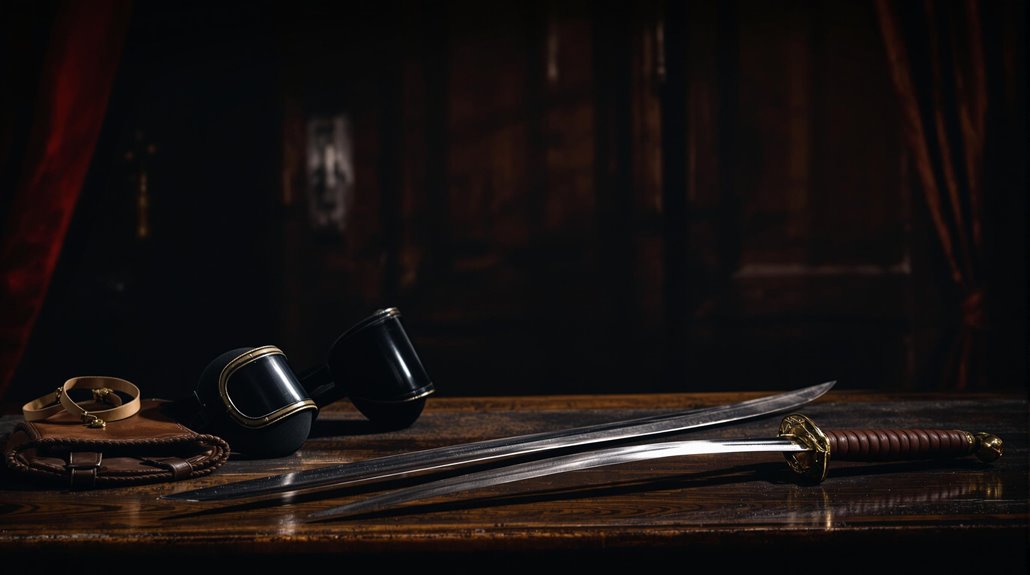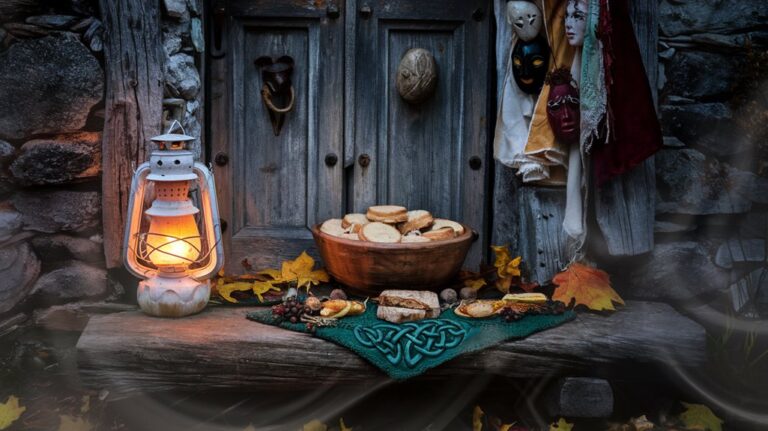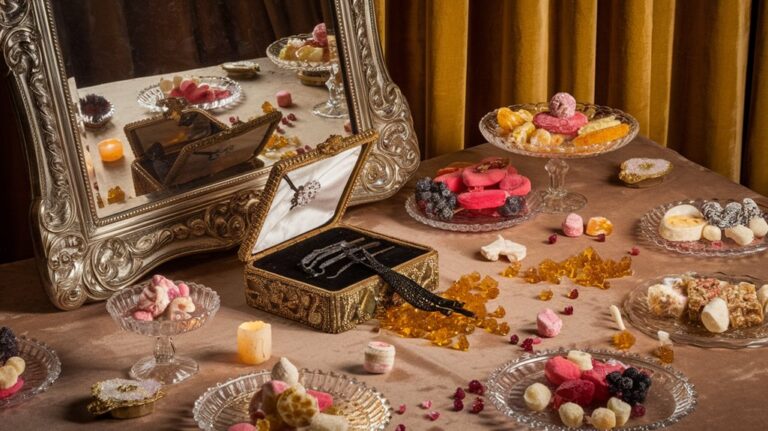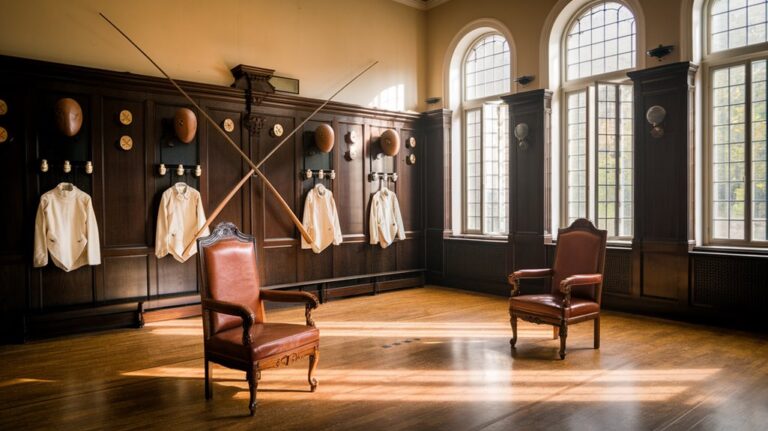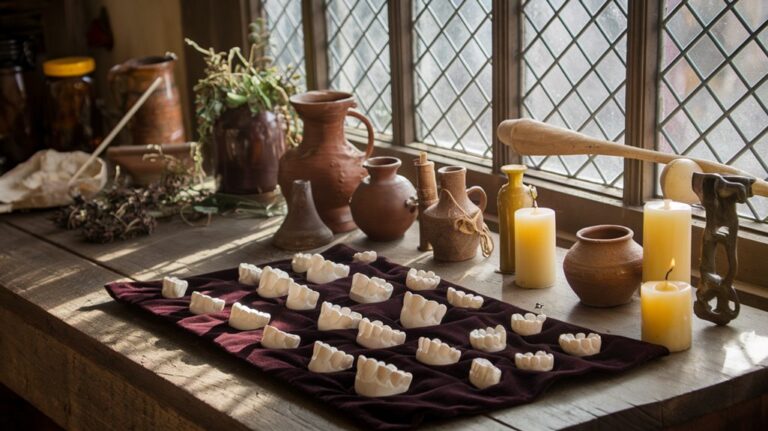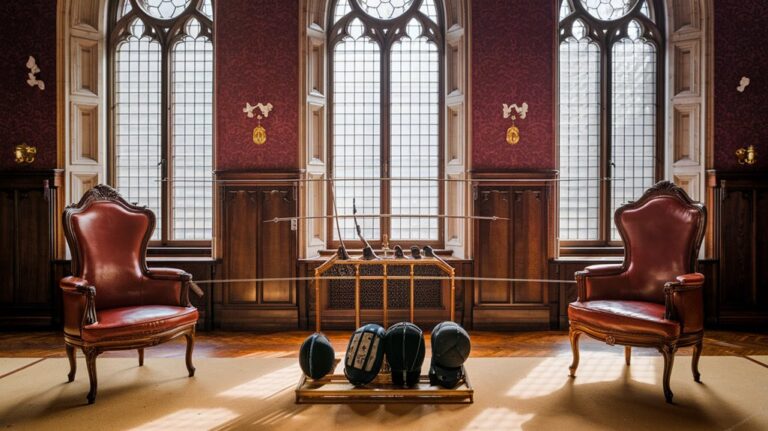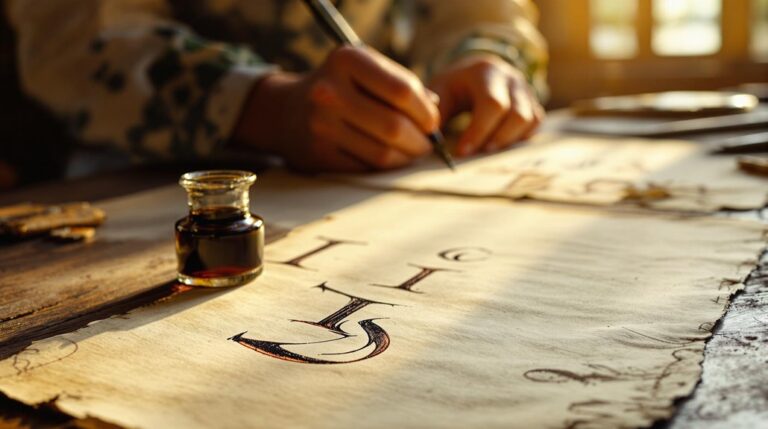Face-Scarring Sword Fights: Inside Mensur Duels
Picture two university students standing face-to-face, sharp swords raised, their eyes locked through protective goggles while their cheeks remain deliberately exposed. You're witnessing a Mensur duel, where participants don't dodge or retreat—they stand firm as steel meets flesh. This centuries-old tradition isn't about winning or losing; it's about proving your worth through unwavering courage. If you're wondering why educated young men would voluntarily submit to facial scarring, there's a fascinating story of honor, tradition, and identity waiting to unfold.
The Noble Origins of Academic Sword Fighting

While dueling has ancient roots, the practice of academic sword fighting can be traced to 15th century Spain, where carrying a rapier became an essential part of a nobleman's attire.
As this noble attire spread through Europe, including the Holy Roman Empire, students in German-speaking regions quickly adopted the sword-wearing custom. Following traditions from the German school of swordsmanship, students trained extensively with wooden wasters before engaging in actual duels.
Through cultural exchange across European universities, students developed their own distinct identity, setting themselves apart from the general population with special clothes, festivities, and songs.
You'd find them engaging in both spontaneous brawls and regulated duels, initially using rapiers and later shifting to smallswords. The Göttinger Hieber sword became a significant advancement that helped shape the evolution of cut fencing techniques.
During their university years, students typically participated in anywhere from 10 to 30 duels, establishing a tradition that would shape academic life for centuries to come.
Weapons and Combat Rules: A Measured Dance
Unlike typical sword fights, Mensur duels follow a highly structured format with specialized weapons and rigid rules.
You'll use a Mensurschläger, a heavy sword that's three times weightier than modern sabers, with either a basket-type guard (Korbschläger) or bell-shaped guard (Glockenschläger). Two experienced physicians always attend these bouts to provide immediate medical care if needed.
The combat techniques are strictly regulated.
You'll stand at arm's length from your opponent, keeping your left arm behind your back while gripping your waistband. You can't dodge, flinch, or move your feet – only your weapon arm swings.
The weapon specifications require a long, narrow blade sharpened for 20 cm on the true edge and 5 cm on the false edge.
You'll take turns striking at your opponent's unprotected face and head until first blood appears, with physicians standing by to assess injuries. These bouts often result in distinctive facial scars called Schmiss, traditionally viewed as badges of honor among participants.
Battle Gear: Protection and Exposed Flesh
A paradoxical mix of protection and vulnerability defines the Mensur duelist's battle gear.
You'll find protective innovations like steel goggles shielding the eyes, leather padding covering the torso and weapon arm, and ear guards defending against slashes. Your non-weapon hand stays secured behind your back with a glove and ribbon.
Yet exposed vulnerabilities remain intentional, particularly on your face. Your cheeks, forehead, and often nose become prime targets for your opponent's blade. Each round consists of 3 to 4 strikes before a brief pause. The specialized swords called Mensurschläger were designed for these academic duels.
While early duelists wore basic clothing, the 19th century brought padded vests and silk-wrapped arms.
Today's equipment includes mail for better protection of your body, fencing arm, and throat.
Two physicians stand ready to tend to wounds, which are designed to leave clean cuts that heal into the prestigious scars you're seeking.
Honor Through Pain: The Philosophy Behind Mensur
Endurance of pain lies at the heart of Mensur's philosophical foundation.
Drawing from Stoic principles, you'll find that participants view pain not as something to fear, but as a character-building experience that proves their moral worth. The pain philosophy behind Mensur emphasizes reason over emotional responses, treating physical suffering as a natural part of life. The belief that pain is temporary helps duelists maintain their composure during these intense encounters. Students from five different corps competed in these duels while maintaining strict social separation to heighten the competitive spirit.
When you participate in Mensur, you're demonstrating courage endurance through a complex interplay of honor, bravery, and mental fortitude.
The visible scars you receive aren't marks of shame but badges of distinction, proving your ability to face pain with composure. This perspective was heavily influenced by German Romanticism, which transformed these duels from mere violent encounters into ritualized demonstrations of psychological strength and ethical character.
Scars of Pride: Social Impact and Historical Significance
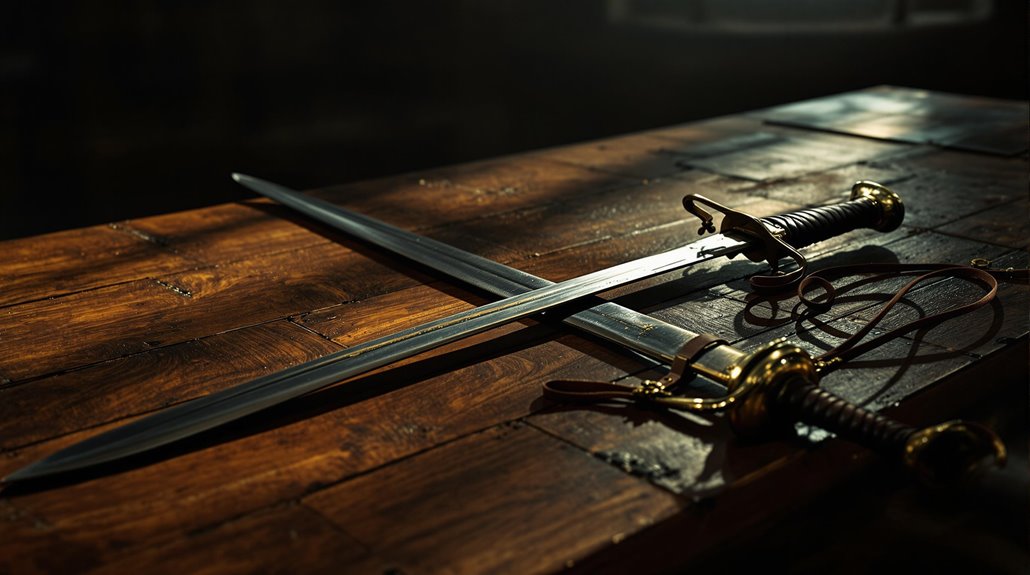
Throughout German and Austrian society, dueling scars carried profound social significance, serving as visible markers of elite status and personal courage.
You'd find these distinctive marks particularly valued in Prussia, where even Otto von Bismarck used facial scars to gauge men's bravery. The scars' symbolism extended beyond mere battlefield courage – they represented a man's willingness to defend his honor and face danger head-on. Early codes of dueling originated in the Renaissance Italy, setting standards that would influence European practices for centuries.
Cultural perceptions of these scars were so positive that they became associated with good husband material, leading some ambitious men to fake their dueling wounds. After a student fencer's death in 1877, the government attempted to ban mensur, though secret duels continued in student corporation basements.
Minority groups even adopted the practice to improve their social standing. While the tradition began in noble circles during the 16th century, it spread through universities and military ranks before finally declining after World War II.
Modern Legacy: Tradition vs. Contemporary Views
Despite widespread changes in modern society, roughly 400 traditional Studentenverbindung fraternities in Germany maintain the Mensur tradition, though with strict safety protocols.
Like the historical fechtschulen, these duels emphasize controlled bouting with strict regulations for safety and assessment.
You'll find today's participants heavily protected with mail padding, steel goggles, and throat guards, while physicians monitor each bout closely. Unlike competitive fencing matches, the non-competitive duels have no winners or losers, focusing instead on character development.

